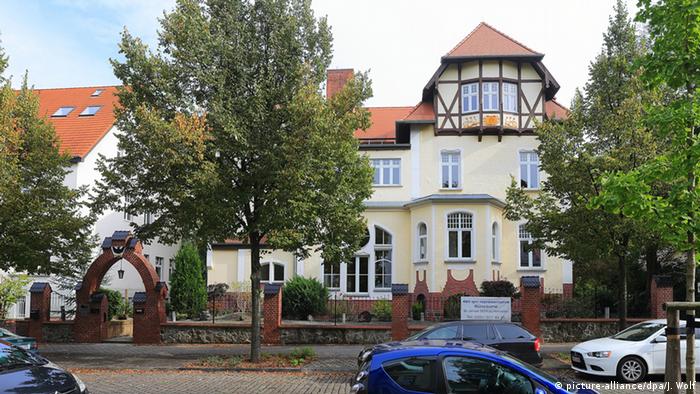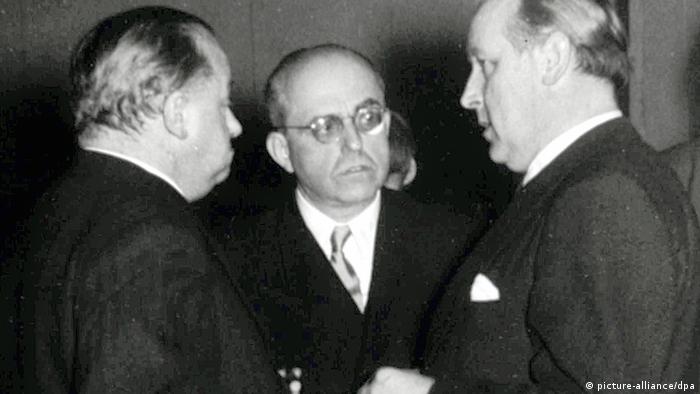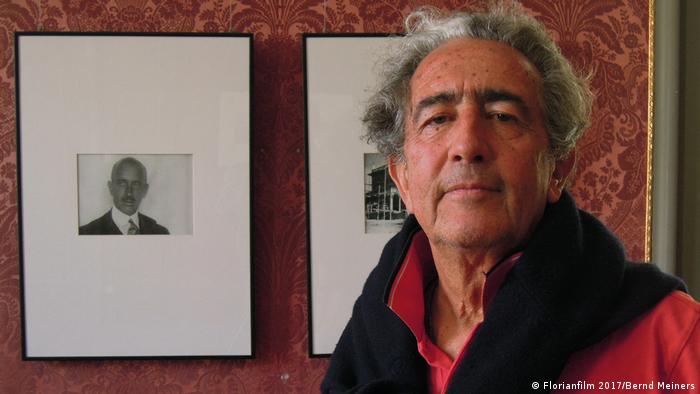More than 60 institutions from five European countries have for the first Time, a “day of the provenance research”. The origin of works of art tells a lot about German history and society.

Since the “Gurlitt case” in 2013, the word “provenance research” is all the rage. He belonged already to the everyday vocabulary of art historians, which explore the origin of works of art. In particular, it examines whether it is in the paintings, drawings and sculptures to Nazi-looted art, from seizures, or from the “escape-related sales” during the Nazi era between 1933 and 1945 dates.
Often there are no documents more. In many cases, the original Jewish owners had to leave at the time of their Deportation or escape into exile, all the possessions back. Sometimes it is only a faded label, a note or mark on the back of a picture or entries in diaries, which give clues to the original owner.

Here are the threads of the Provenance research: The German centre for lost Cultural goods in Magdeburg
Sales lists of auction houses, gallery owners, or the four art buyers for the planned Hitler Museum in Linz, including Hildebrand Gurlitt, can help the researchers sometimes. By coincidence, found business documents of the controversial art dealer Gurlitt are worldwide available online.
Response to “Washington Declaration”
In 1998, the Federal Republic of Germany had signed, along with 44 other States, the “Washington Declaration”, which is, however, remained more of a Declaration of intent. In it, the signatories, a fair and just solutions in the Nazi era looted, expropriated and “due to persecution extracted from” the art undertake to find for libraries and other art objects. In order for the pad to close any existing provenance gaps in public collections and museums.
The scandal around the controversial looted art collection of the art dealer Hildebrand Gurlitt, has changed the handling of provenance research in Germany: In Germany, the “Lost Art”database has been established, which enables a worldwide online search for lost works of art.

After 1945, Gurlitt (center) was able to continue his career as an art expert continued: here in the Kunstverein in Düsseldorf in 1952.
Gurlitt was in the Second world war, on the orders of Hitler and Hermann Göring much in the occupied countries of France, Belgium and the Netherlands to looted art and “linearized” Jewish works of art to buy up to ridicule. Some of the long-lost works of art are now recorded in the database of “Lost Art” and recorded.
A Central point of contact for Jewish heirs
The founding of the “German center for cultural property losses” in Magdeburg, 2015 was a further cultural and political consequence that has attracted the Federal government at the time of the “Gurlitt case”. The centre is the point of contact for national and international requests to Nazi-looted art and trophy art of the Russian Red army. The previous work of the centre for provenance research was further expanded and with new powers to requests from Jewish heirs and institutions from abroad can be better processed.
The new documentary “life is an art – The fall of Max Emden”, which comes in April in the German cinemas, shows an example of how provenance research in Germany: The state art collections and museums are not maximizing their opportunities.
After the surprising discovery of the collection Gurlitt much in motion. State Minister for culture Monika Grütters has now allocated several million Euro for additional researchers to staff. But how the money is used and how exactly the requirements for a complete provenance for works on loan for exhibitions in appearance, stands on a different sheet.
Search for clues in “the case of Max Emden”
Since 2007, the restitution lawyer Markus Stötzl tried to move the Federal government to the return of several valuable paintings by painters such as Canaletto and Monet, from the collection of Max Emden. The Jewish Department store magnate was forced to sell after his escape to Switzerland in 1928, the largest part of his collection of paintings. He died in 1940, in exile, his son was arrested by the Gestapo, but succeeded in escaping to Chile. In the movie, the grandson, Juan Carlos Emden from the family story tells, on whose track he was looking for had made.

Grandson, Juan Carlos Emden, in front of a Portrait of his grandfather Max Emden
The Federal Ministry of Finance have been worn until today, property administrator of all Nazi-looted works of art, the powers of the occupation to the surrender of Germany in 1945. Later, the was not restituted to them in the possession of the Federal Republic of Germany. In the past, the financial had refused the Ministry of the images to the heirs of Max Emden to return.
Surprising turn in “the case of Max Emden”
According to the lawyer of the family by the Nazis financially ruined Max Emden, forced to sell his valuable art collection in 1938. Via a detour, which shows the current documentary, “life is a work of art – The case of Max Emden” in detail, were some of the valuable paintings in Hitler’s private collection. After 1949, they were then in the Federal Republic of Germany.
But now the “Limbach Commission recommends that” the Federal government, which can be called in the event of disputes over the return of cultural goods, and the Film advance was able to see two of Canaletto images (“view of the Karlskirche in Vienna” and “view of the Zwinger moat in Dresden”) to the heirs of Max Emden to return. Spicy hung one of the pictures for a long time in the Villa Hammerschmidt, the Bonn residence of the Federal President.